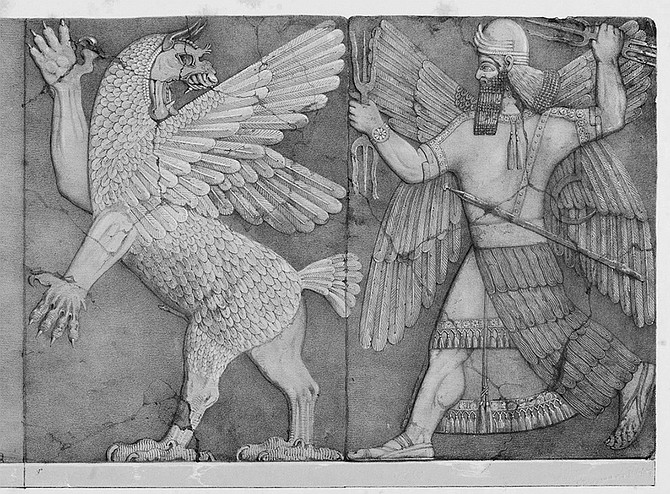 Facebook
Facebook
 X
X
 Instagram
Instagram
 TikTok
TikTok
 Youtube
Youtube

— from The Babylonian Creation Myth
The Babylonian Creation Myth, also known as the “Enûma Eliš, is the Babylonian creation mythos (named after its opening words, “When on high…”). Recovered in fragments by English archaeologist Austen Henry Layard (1817–1894) in 1849, the poem was found in the ruined Library of Ashurbanipal at Nineveh (Mosul, Iraq) and published in 1876. With about a thousand lines, the poem is recorded in Old Babylonian on seven clay tablets, each holding between 115 and 170 lines of Sumero-Akkadian cuneiform script. Only the fifth tablet has never been recovered. As one of the most important sources for the Babylonian worldview, the epic centers on Marduk and the creation of humankind for the service of the gods.


— from The Babylonian Creation Myth
The Babylonian Creation Myth, also known as the “Enûma Eliš, is the Babylonian creation mythos (named after its opening words, “When on high…”). Recovered in fragments by English archaeologist Austen Henry Layard (1817–1894) in 1849, the poem was found in the ruined Library of Ashurbanipal at Nineveh (Mosul, Iraq) and published in 1876. With about a thousand lines, the poem is recorded in Old Babylonian on seven clay tablets, each holding between 115 and 170 lines of Sumero-Akkadian cuneiform script. Only the fifth tablet has never been recovered. As one of the most important sources for the Babylonian worldview, the epic centers on Marduk and the creation of humankind for the service of the gods.
Comments